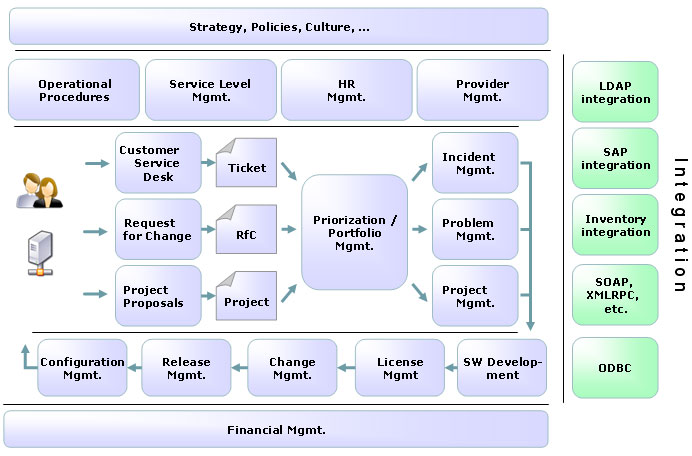Key Points
- services management has defined goals, models for delivery, operations, support, maintenance, retirement
- services delivery process defined
- services operations standards defined as operations service tiers normally
- services measured at runtime based on execution with results captured summarized by tools like Promtheus, Grafana
- services maturity models exist for referemce
- services catalog can be reviewed to assess current maturity levels vs planned service strategies to identify opportunities
References
| Reference_description_with_linked_URLs_______________________ | Notes______________________________________________________________ |
|---|---|
Architecture Themes
ascrum definitions
Concepts on Service Maturity
https://docs.splunk.com/Documentation/Splunk/latest/RESTREF/RESTmetrics
https://spiresearch.com/psmaturitymodel/service-maturity-levels.html
https://plextrac.com/capability-maturity-model-cmm/
https://www.tutorialspoint.com/cmmi/cmmi-maturity-levels.htm
https://www.megatronicstech.com/maturity-level-of-technology/
https://en.wikipedia.org/wiki/Capability_Maturity_Model
Key Concepts
Key Concepts for Service Maturity
- Correctness: The microservice does what it is intended to do without causing errors.
- Reliability: The microservice can perform its intended function consistently over time.
- Efficiency: The microservice provides value for the resources it consumes (like memory, CPU time, etc.).
- Resilience: The microservice can handle failures gracefully, both within itself and when other services fail.
- Scalability: The microservice can handle increased load by either scaling up (using more resources on a single node) or scaling out (distributing the load across multiple nodes).
- Manageability: The ease with which the microservice can be monitored, managed, and updated.
- Operability: The degree to which the microservice supports the tasks that operators need to do, like deploying new versions, scaling, diagnosing problems, etc.
Reference: The Maturity of Microservices
Importance of Measuring Service Maturity
Measuring service maturity is crucial for several reasons:
- Quality Assurance: Helps to ensure that all microservices meet the organization's standards for performance and reliability.
- Risk Mitigation: Identifies potential issues before they become larger problems.
- Resource Allocation: Informs decisions about where to invest time and resources for improvement.
- Performance Benchmarking: Provides a means of tracking improvement over time.
- Return on Investment: Mature services provide more value for the resources consumed, increasing the return on investment.
Reference: Microservices Maturity Assessment
Ideas for Measuring Service Maturity
- Establish Metrics: Define what constitutes maturity for your microservices, considering aspects like reliability, scalability, resilience, etc.
- Automated Testing and Monitoring: Use automated tools to continuously monitor and test your microservices, providing real-time feedback on their performance and maturity.
- Service-Level Objectives (SLOs) and Service-Level Indicators (SLIs): SLOs define the level of service you aim to provide, and SLIs are the metrics that measure your actual performance against these objectives.
- Incident Response and Postmortem Analysis: When something goes wrong, have a plan to fix it quickly and then conduct a postmortem analysis to learn from it and improve the maturity of the service.
- Regular Reviews: Regularly review the maturity of your services to identify trends, pinpoint areas for improvement, and track progress over time.
Potential Value Opportunities
Potential Challenges
Candidate Solutions
http://www.project-open.com/en/module-itsm
Covers
- Incident Management
- Problem Management
- Change Management
- Configuration Management
- Release Management
- Service Level Management
- Defect Management
- SLA Management
- Configuration Management
http://www.project-open.com/en/process-itsm-service-level-management
Step-by-step guide for Example
sample code block
